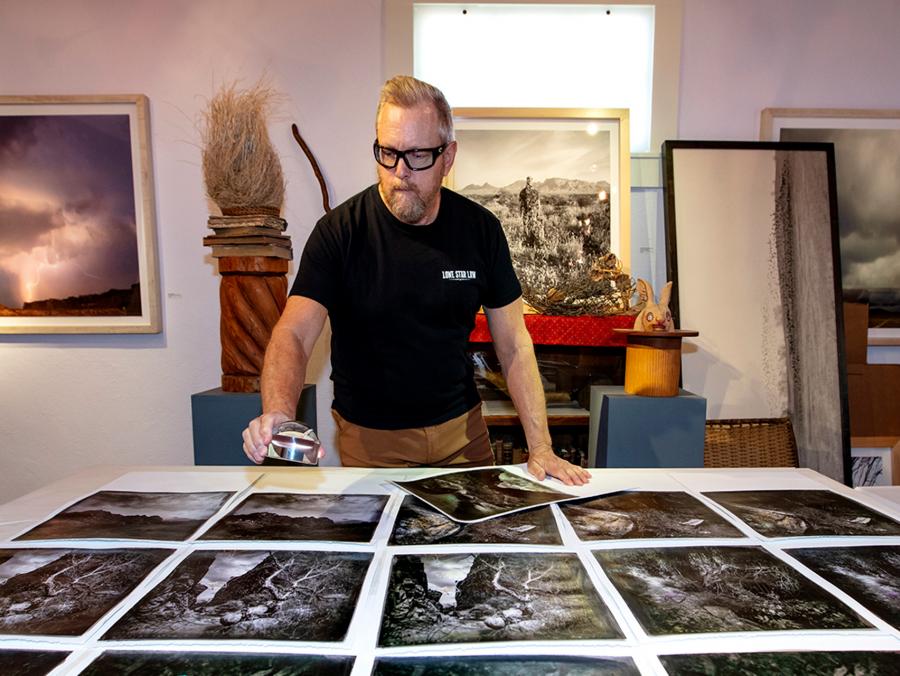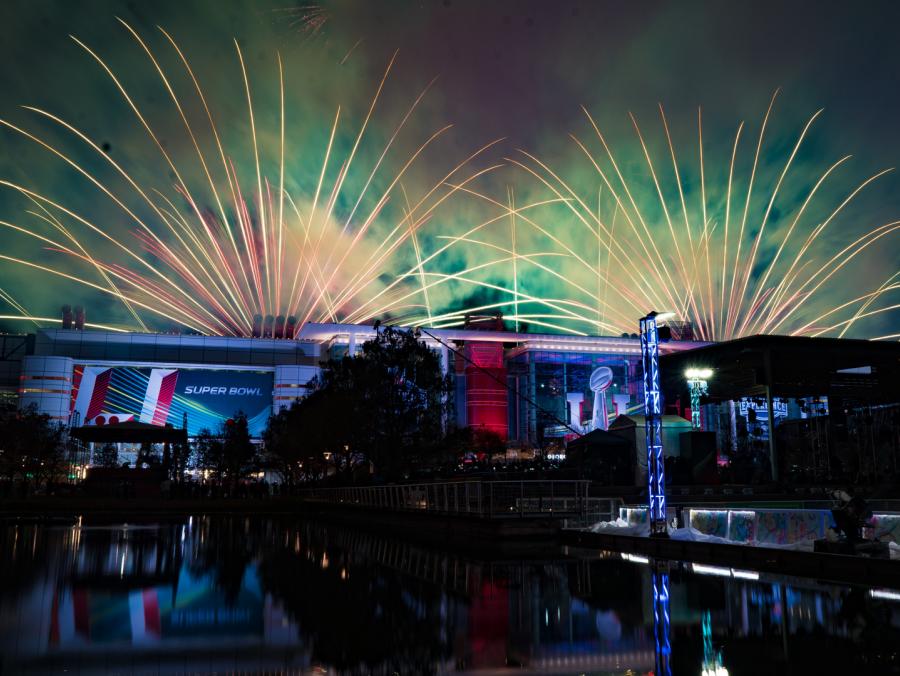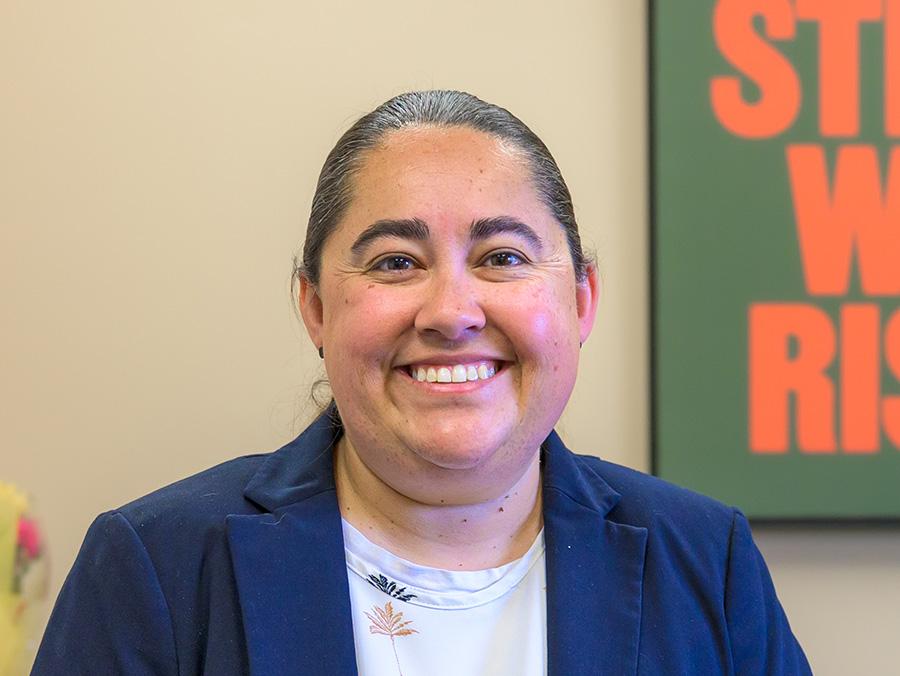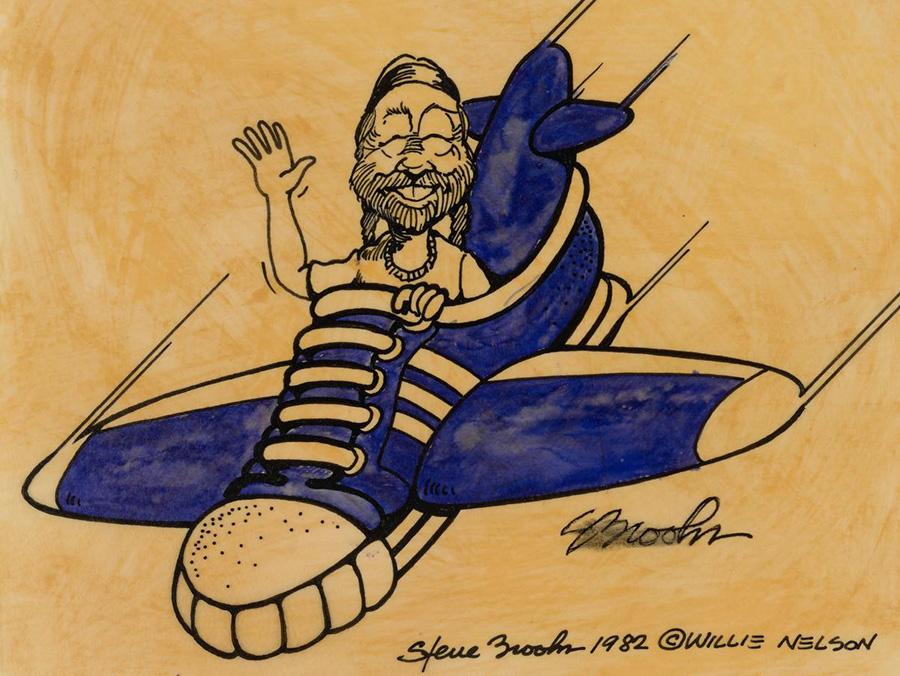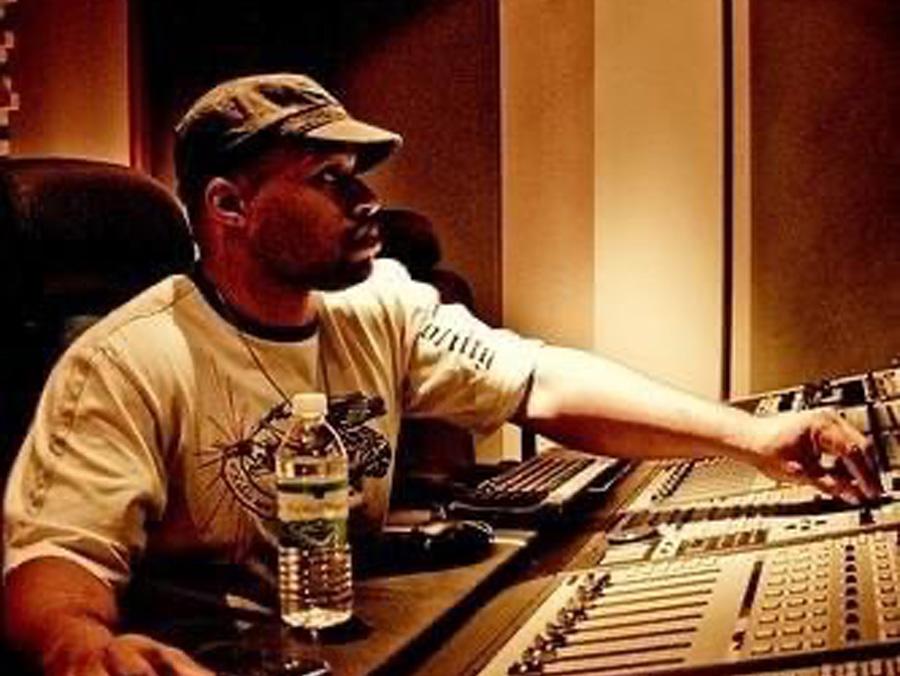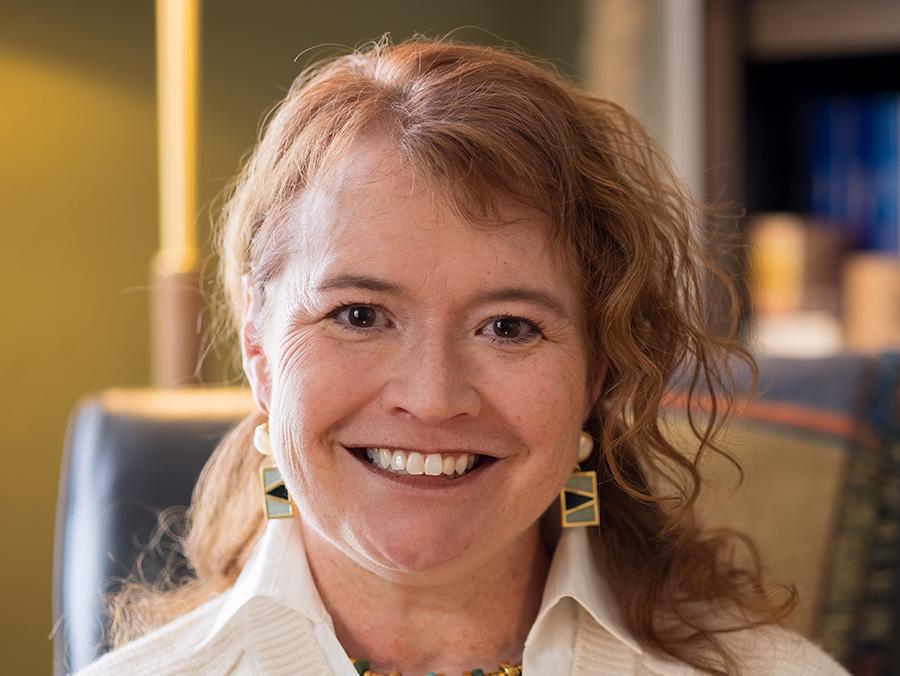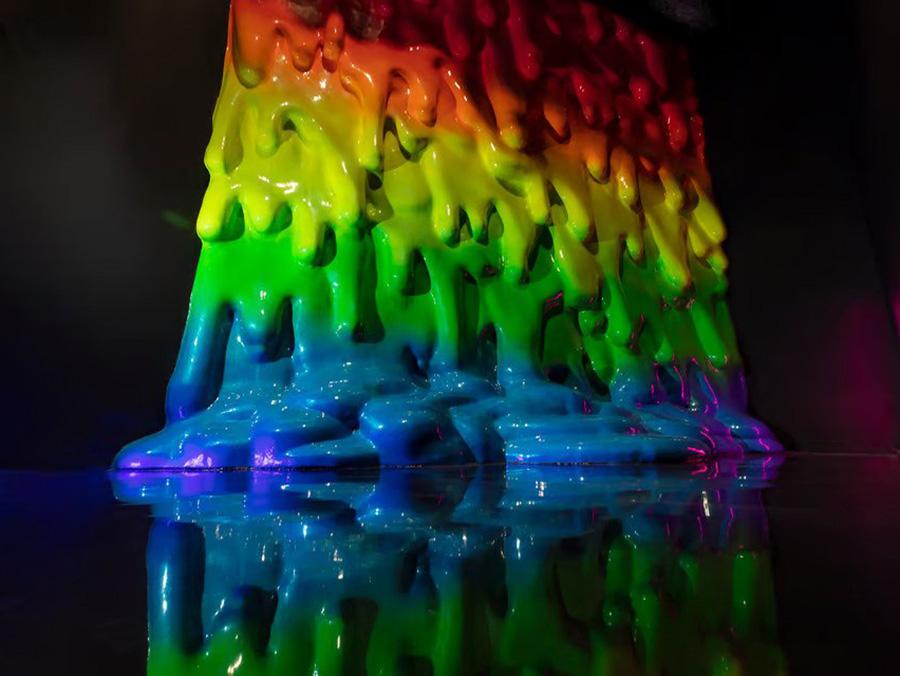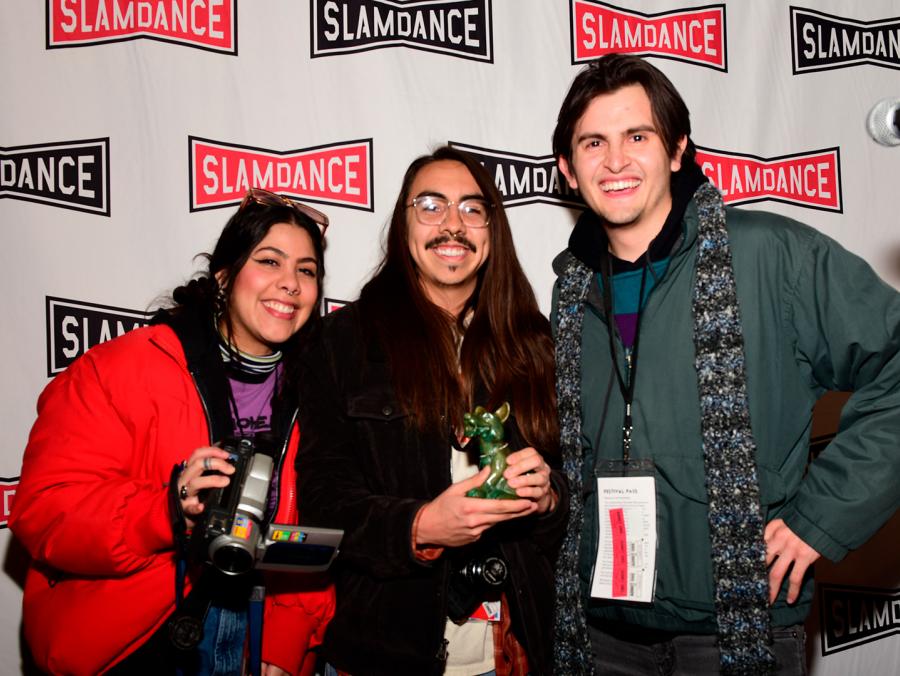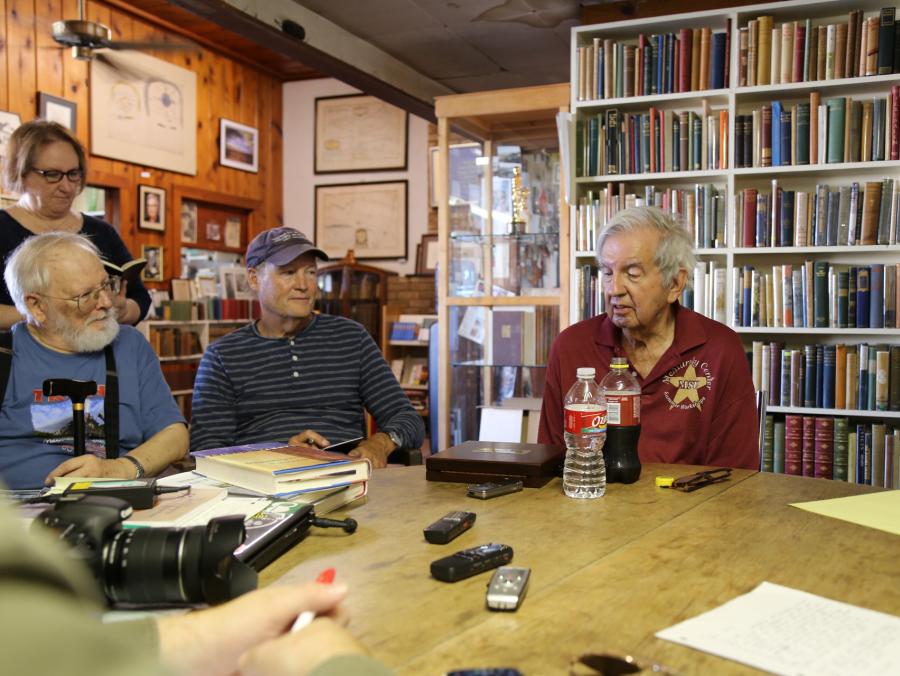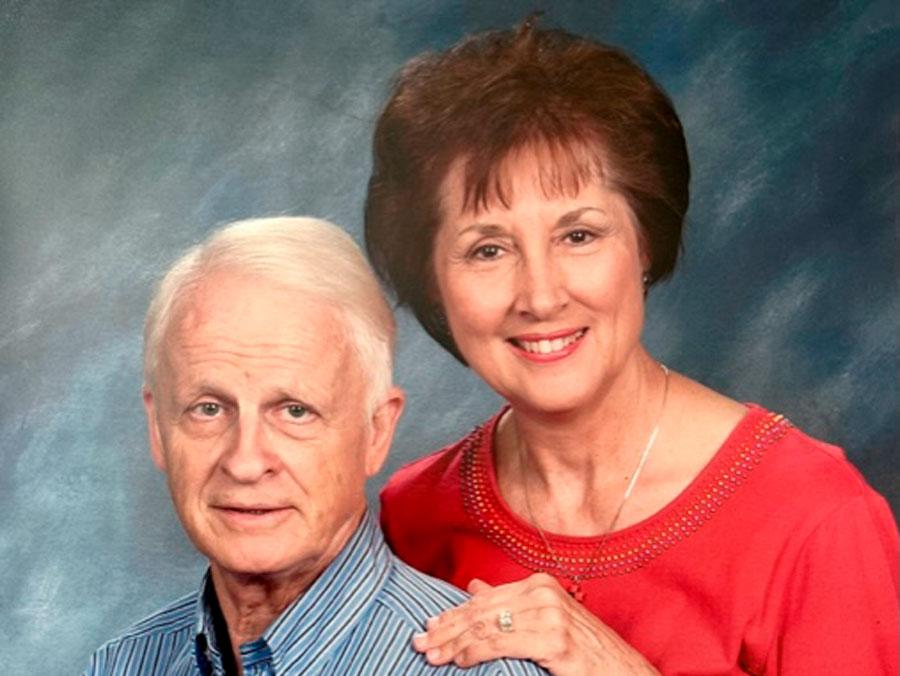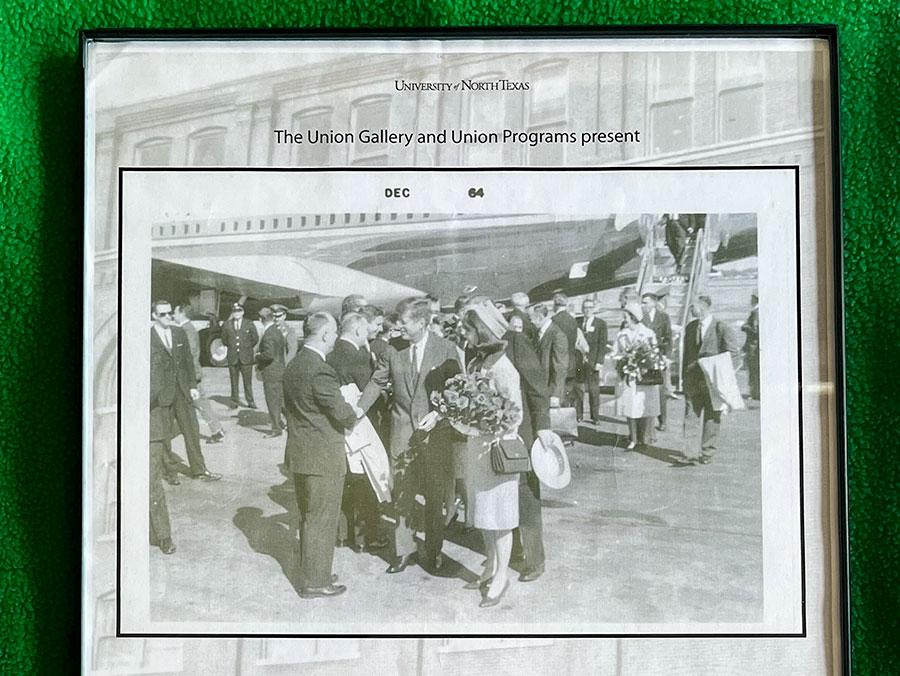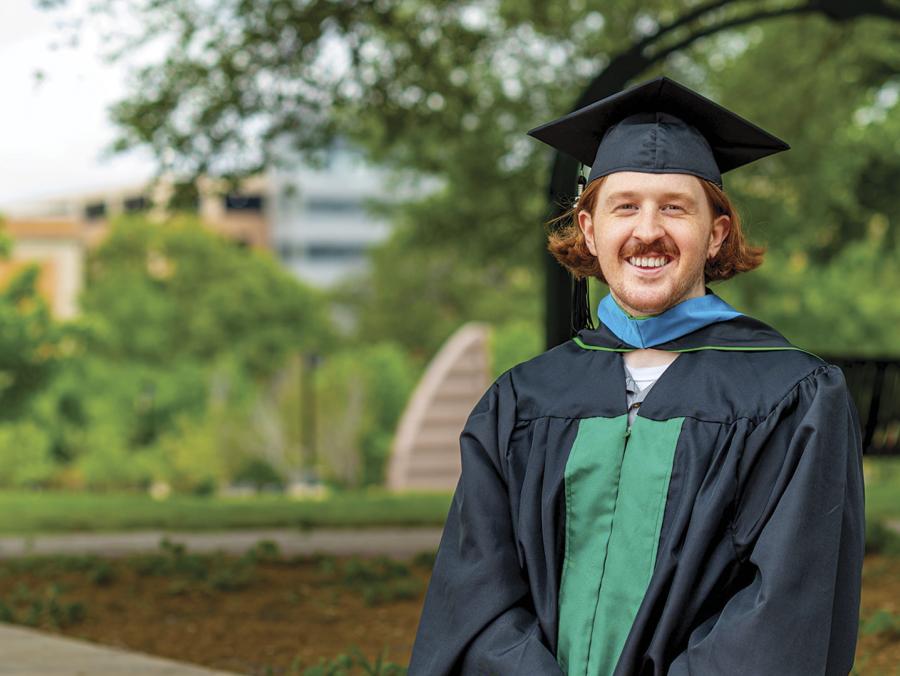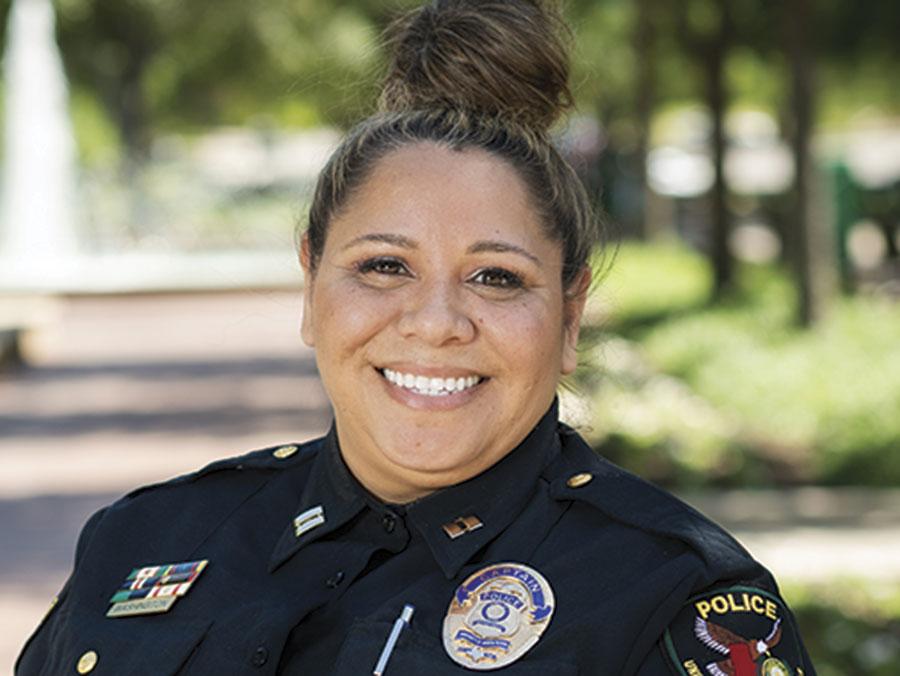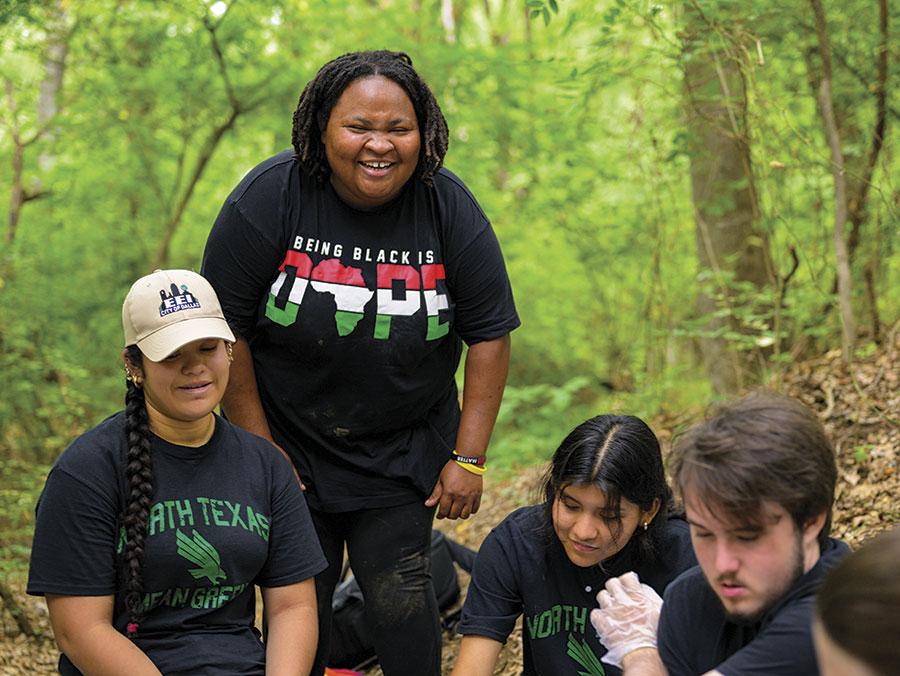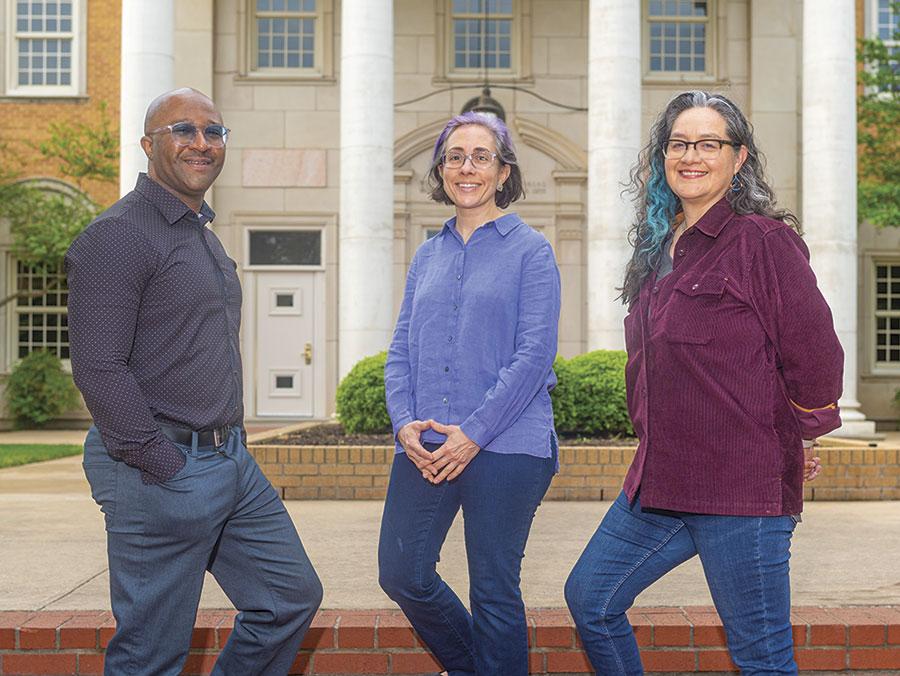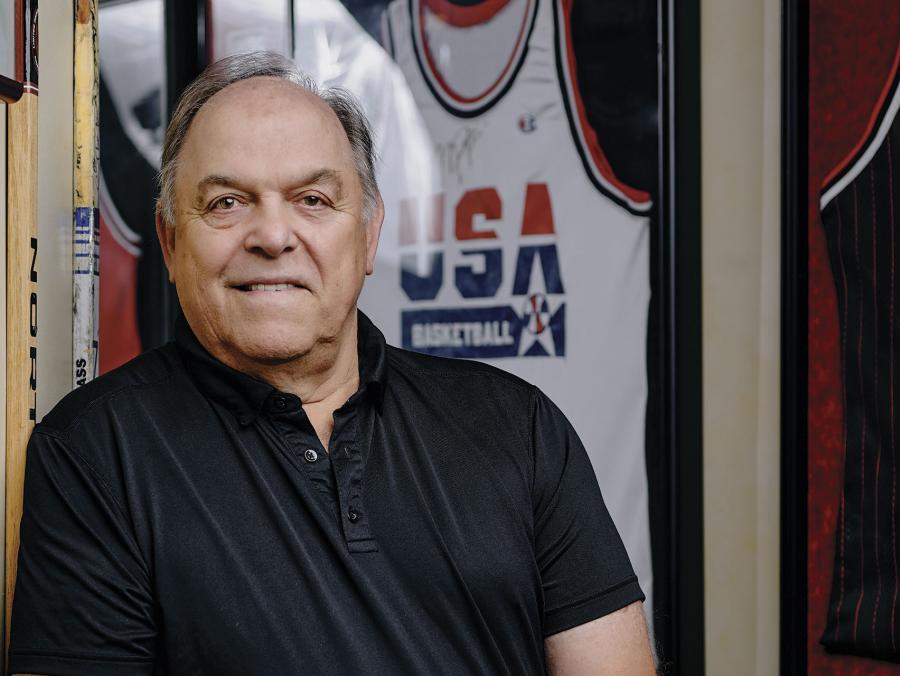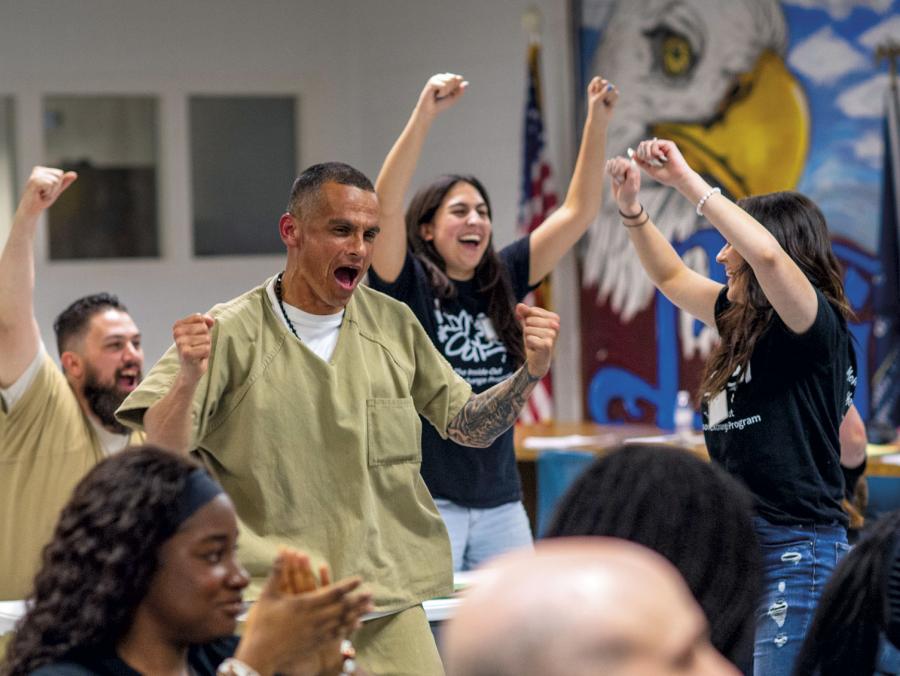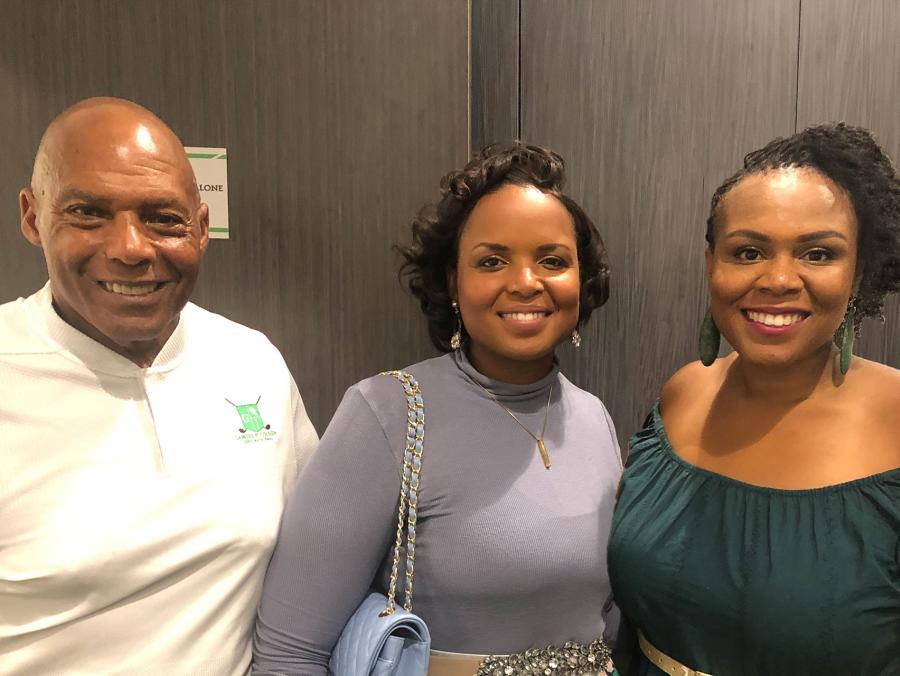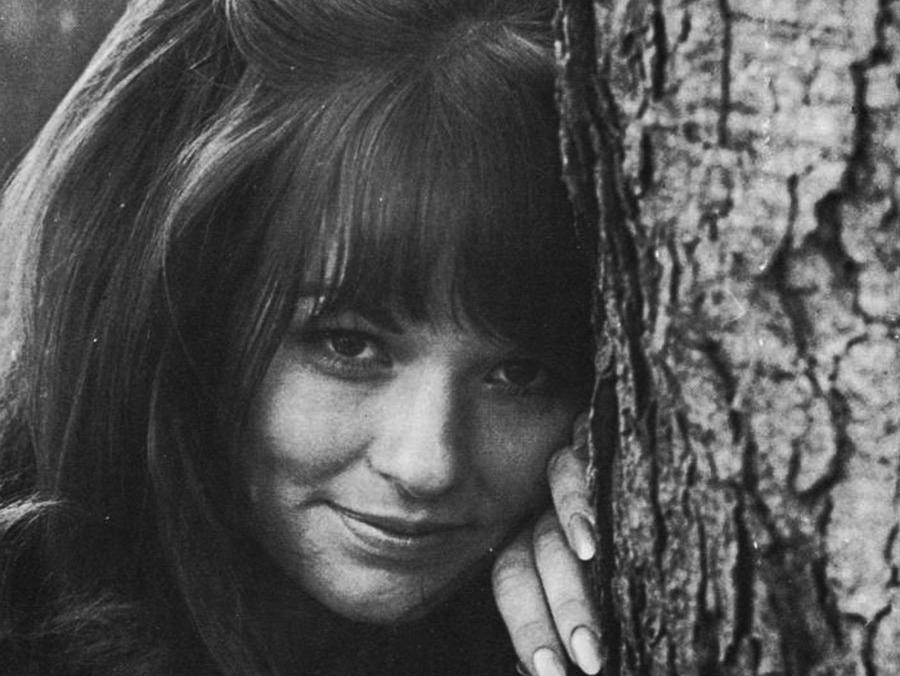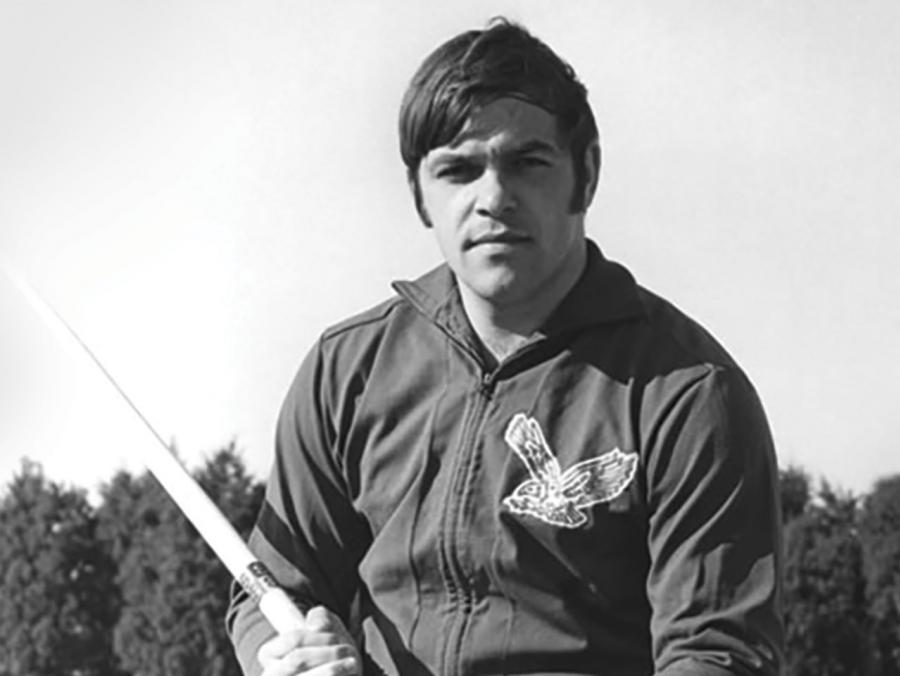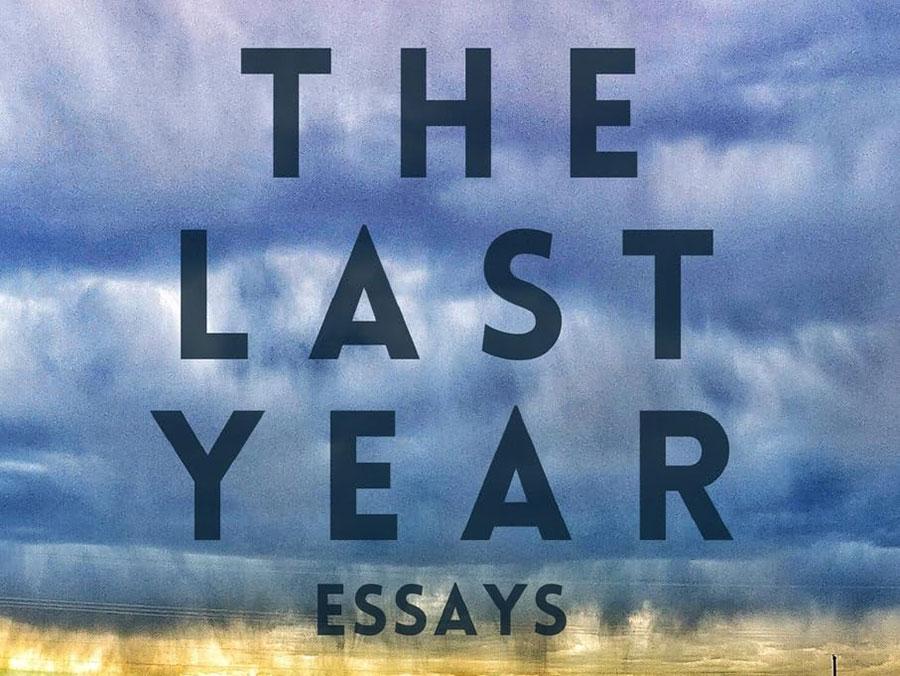
Michael Flanagan needed a subject for a film that would serve as a thesis for his Master of Fine Arts degree in documentary production and studies. He found it on campus.
Whenever he passed by the newly built Art Building in 2019, he noticed an exhibit on display in the CVAD Gallery -- but he kept putting off visiting it.
Then, the last day for the show came and the gallery was closed. He thought he'd missed his chance.
But a staffer allowed him to see the exhibit, which featured the works of Vernon Fisher from 1980 to 2019, including Time Falling Objects.
"The most vivid memory I have is getting to the back of the gallery and seeing a large artwork in Vernon's signature chalkboard painting style," Flanagan says, remembering that he connected that piece to Evidence of Houdini's Return, a work of Fisher's that he saw at the Blanton Museum of Art in Austin several years earlier.
Flanagan was in awe.
"I thought, 'I need to figure out who made this and find out if I could make a documentary about them," Flanagan says.
Flanagan would make Breaking the Code, a documentary about Fisher, UNT Professor Emeritus of art and one of the leaders of post-modern painting, who died in April. The film explores how Fisher's work was made and the impact it had on others, including UNT's art students.
"I was struck by how much respect people had for Vernon throughout his life," Flanagan says. "Whether it was a childhood friend admiring Vernon's commitment to a grueling training schedule as they chased a state title in track, or a college classmate reminiscing on Vernon's leadership in organizing historic demonstrations for social justice in the 1960s -- not to mention the international acclaim he received for his art."

The filmmaking process wasn't easy.
Flanagan purchased the catalog for the UNT show, and learned Fisher lived in Fort Worth. Flanagan, who grew up in the Rio Grande Valley, often traveled around Texas and while he was around Fort Worth, he drove to Fisher's studio in February 2020.
He knocked on the studio's door and introduced himself to Fisher, who invited him in and let him watch as he worked on a painting, called Detective, for 10 minutes. They talked for a few minutes about Flanagan's idea, and Fisher said he would think about the documentary.
"He's a late career artist who is internationally acclaimed and well established and here's a scrappy young filmmaker knocking on his door," he says. "I kind of persisted."
Flanagan began to conduct intense research, surrounded in his office by piles of books and notecards and sticky notes.
COVID-19 soon emerged, but he and Fisher kept up a dialogue. Fisher recognized he was taking the project seriously. A year later, filming began with interviews from art critics and Fisher's former students, including Jeff Elrod ('90) and Baseera Khan ('05), as well as footage of Fisher painting.
Fisher's work is expansive and cross-disciplinary, involving photography, sculpture and meticulous painting by hand. Fisher would create these "incredible, beautiful sculptures," Flanagan says, by hand, then photograph the sculptures and use the photographs as a reference to paint photorealistic images.
"That only scratches the surface of the technical aspect, not to mention the incredible wide-ranging content of his art, which touched on subjects as broad as film history, psychology, poetry, original narrative writing, physics and philosophy," Flanagan says. "He had a very impressive intellect that he nurtured for himself. That all came through in the art."
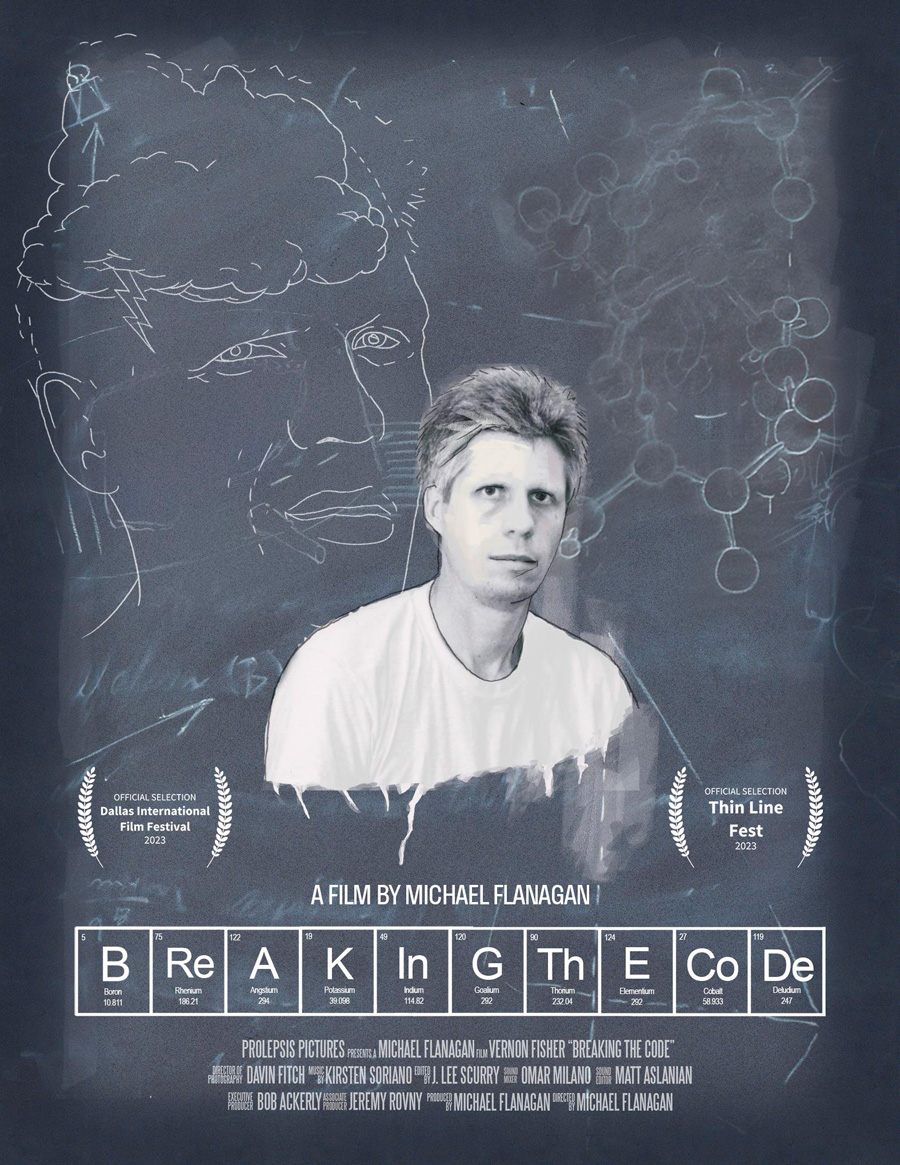
Flanagan, who lives in McAllen, had been intrigued by films since he was a child, watching movies with his father. At age 20 he began making his first short films, with little to no budget, focusing on artists in the Rio Grande Valley.
Breaking the Code, his first feature-length movie, challenged him to condense a person's entire life into the span of about one hour. During the three years he made the movie, he filmed 50 hours of footage that was cut down to about 47 minutes.
"We worked through many different versions of the film before settling on what felt like the most effective use of our material," he says.
Now working on completing his thesis, he has a few ideas for future documentaries, including stories on artists, athletes and other filmmakers, and currently is writing a narrative feature film adaptation of Fisher's original stories called Navigating by the Stars.
Breaking the Code -- which includes an original score composed by Kirsten Soriano, associate professor of composition at UNT -- has been seen at the Thin Line Film Fest in Denton and the Dallas International Film Festival, with additional screenings at festivals and museums in the works. Flanagan also is exploring opportunities for broadcast and streaming.
But he got the biggest approval from the film's subject.
"Vernon wasn't somebody who would beat around the bush," Flanagan says. "The fact that we were able to share the film with him and that he appreciated it is probably what I'm most proud of."




